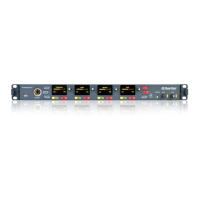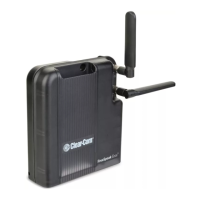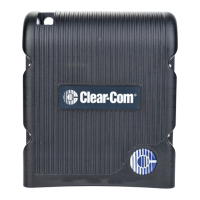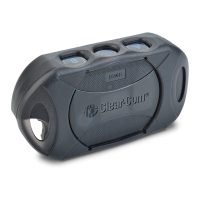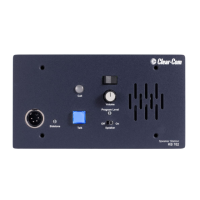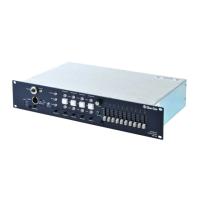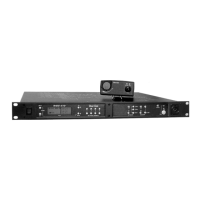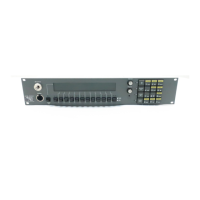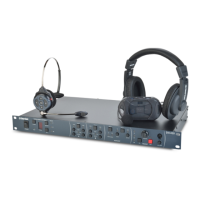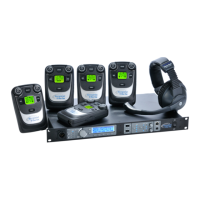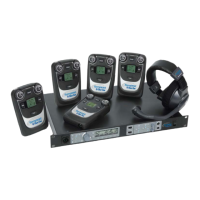User Guide| FreeSpeak II for Eclipse HX
FS II also includes a drop-in battery charger for the beltpack Li-Ion batteries. You can conveniently
charge the battery by placing the whole beltpack into the charger, or by placing individual batteries
into the charger.
FS II operates using a cellular network of transceivers located around a working environment. The
transceivers connect to the matrix via an E-IPA-HX or E-Que card installed on the matrix. Each
transceiver provides an area or cell in which up to ten full-duplex beltpacks can operate.
Beltpacks can roam among and between cells without disconnecting because each beltpack
continually detects which transceiver has the strongest available signal. When the signal from a
transceiver starts to diminish due to the distance from a beltpack, the beltpack automatically
“hands off” its signal to the nearest transceiver, ensuring smooth transfer.
Note: The E-IPA-HX card with IP Transceiver offers twice the beltpack density compared to the E-Que
card .
2.2 FreeSpeak II with an FSII Transceiver (1.9 and 2.4)
Using a transceiver splitter allows up to five transceivers to be connected to each transceiver port.
Each E-Que card can connect to two splitters and so support up to 10 transceivers. Each
transceiver supports up to five beltpacks. This means that up to 50 beltpacks can be present,
giving a great deal of flexibility in placing beltpacks where they are needed most, and providing
wireless reliability.
If a transceiver card is selected in the configuration software, this supports 8 transceivers.
Note: Each transceiver is designed to handle five beltpacks in the 1.9 GHz range and four in the 2.4 GHz
range, simultaneously and in good conditions. However, if interference or propagation problems
occur in an area, to ensure proper operation and reliability, it may be more practical to install one
less beltpack for each transceiver.
For zones which are likely to need coverage for up to five or more beltpacks simultaneously you
must install a second transceiver. Similarly, for good coverage for nine or more beltpacks
simultaneously, a third transceiver may be required.
Radio Frequency
(RF) Band
Minimum number. of
transceivers in one RF cell
Maximum number of beltpacks
supported in one RF cell
1.9 GHz 1 4 - 5
2 8 - 10
3 12 - 15
Page 9
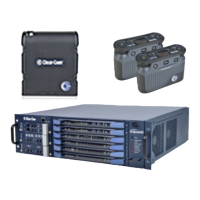
